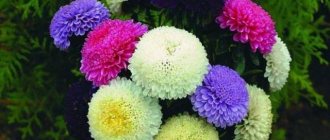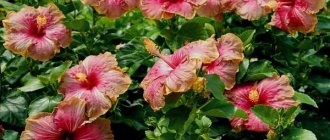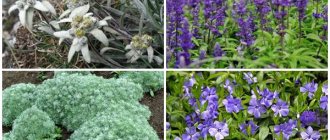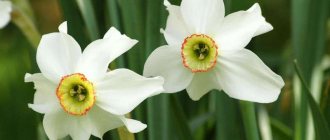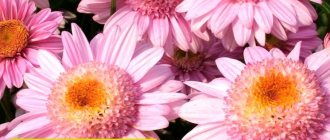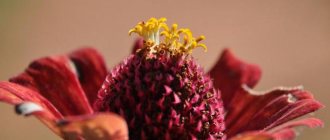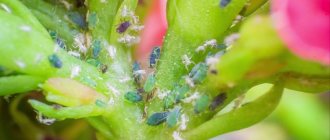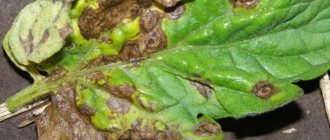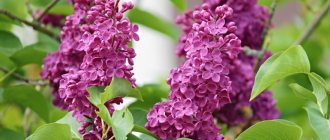Description
Asters are herbaceous perennial plants that belong to the Asteraceae or Compositae family. The genus consists of more than 200 species. Annual plants called "Chinese aster", these are callistephus. They were brought from China in the 18th century.
The name of the flower in Greek means star. The Eurasian continent is considered its homeland; it is also common in Africa, South and North America.
In the world of botany, asters are classified as rhizomatous herbs.
Their leaves are simple. The height of the bush is from 10 to 150 cm. Their inflorescences are baskets, collected from petals of varying lengths, shaped like a tongue. The central ones are short, they are usually painted yellow. The colors of the outer petals are varied: white, pink, crimson, lilac and other colors.
Kinds
Asters are a very numerous genus of perennials.
Let's consider the varieties that have become widespread in the temperate climate zone:
Perennial asters varieties description and photo
Alpine
Alpine aster One of the most common species. It is also called Korzhinsky's aster. The height of the plant is from 20 to 30 cm. It has horizontal roots and many shoots.
It blooms at the end of May. Flowering duration is about a month. The flower has a diameter of 4–6 cm. There is one flower on each peduncle.
Externally, the inflorescences resemble daisies. The species is replete with many colors of petals : pink, orange, purple, lilac and others.
The variety has high frost resistance.
Common varieties of alpine aster:
- Albrus is a low variety up to 20 cm, with white flowers. Blooms in June – July.
- Gloria - this variety is distinguished by small flowers up to 3 cm in diameter. Their color is blue.
- Goliath - this variety has light purple flowers that bloom in June. Their diameter is 6 cm.
- Happy End - blooms in May. Pink flowers are crowned with strong peduncles covered abundantly with leaves.
New Belgian
New Belgian aster Native to North America. This variety is also called Virginian. Its bushes grow up to 50 - 150 cm. They have the shape of an inverted pyramid. The plant grows very quickly. This is facilitated by the creeping root system.
The inflorescences are paniculate, consisting of many baskets, their number can reach up to 200 pieces. The main color is lilac, but breeders have developed varieties of other shades. Some of them have several rows of petals. Their diameter varies from 2 to 4 cm.
It begins to bloom in early autumn and will continue until frost. There are varieties with a summer flowering period. Tolerates cold winters well. Does not require shelter.
The variety is widely used for cutting. It stays in vases for up to two weeks, provided that the water is regularly changed and the lower leaves are removed.
Some varieties related to the New Belgian species:
- Mont Blanc - this variety has white flowers that bloom for up to two months in the autumn. The height of the bush is about 130 cm.
- Amethyst - blooms flowers in August. Blooms before frost. Their color is lilac. Outwardly, they resemble daisies.
- Ballard - has bushes up to a meter in height, abundantly sprinkled with flowers with a diameter of up to 3.5 cm. They are painted pink.
- Saturn - the variety is very different - it has branched bushes, up to 1.5 m high. The flowers are painted light blue. Their diameter is about 4 cm.
Heather
Heather aster It grows no more than 100 cm in height. It blooms profusely. Its flowers are small, no more than 1.5 cm in diameter. They are pink, white, and blue.
The flowering period is long, up to two months. It begins in September and continues until frost in November.
The variety is highly resistant to drought. It can easily withstand frosts down to -35 degrees. It is not widespread in the post-Soviet countries.
A feature of the variety is branches sloping down. It can be used as a ground cover plant.
Description of several varieties of heather aster:
- Herbstmyrthe has paniculate inflorescences. They consist of small baskets, no more than 12 mm in diameter. Their color is white and blue. The flowering period is 45 days. It occurs in September - October.
- Blue Star is a trailing variety of asters. It blooms blue from August until the onset of frost.
- Lady in Black – this variety captivates with its color. The flowers consist of white petals with pink-brown centers. Used as a ground cover plant.
Peony-shaped
Peony aster This variety strongly resembles a peony with its flowers. This feature gave the species its name.
Flower petals have different lengths: the outer ones are longer, the inner ones are shorter. Their edges bend inward. The inflorescence has a spherical shape.
The bushes grow no higher than 70 cm. They are distinguished by strong shoots, but their number grows only slightly. Flowering period – July-October.
Description of varieties of peony aster:
- Silver Tower is a variety with petals changing from blue to white. The diameter of the inflorescence is 10 cm. The flowering period occurs in August-September.
- Red Tower - the variety has compact bushes, up to 70 cm high. The flowers are bright crimson in color, double. The diameter is 8 – 10 cm. Suitable for cutting. The flowering period begins in July and ends at the first frost in the fall.
- Annushka - the variety blooms with a rich carmine hue. The diameter of the flower is about 10 cm. Flowering occurs in August-September.
- Duchess - this variety is distinguished by lush, double flowers. Their color is bright pink. The diameter of the inflorescence reaches 12 cm.
Italian
Italian aster Grows from 30 to 60 cm. The bush has the shape of a hemisphere. This variety is also called the European aster. It is widespread in Europe and the Caucasus.
The inflorescences are loose, consisting of flowers up to 5 cm in diameter. Each of them contains up to 15 pieces. baskets The flowering period is from mid-summer to September, with an average of 65 days. The color of the flowers depends on the variety.
Several popular varieties of Italian aster:
- Gnome is a variety with purple flowers. Used as casing and for cutting. Stands up very well in water.
- Herman Lene - pleases with abundant flowering. Its flowers are light purple.
- Cobola is a variety with flowers 4 cm in diameter. Their color is dark purple. Flowering lasts 55 days and begins in July.
Bush
Bush aster Grows in erect, spherical or hemispherical branched bushes. They grow up to 100 cm.
The shoots have dense pubescence. The diameter of the flowers is from 3 to 7 cm. It depends on the variety and conditions in which the plant grows. The flowering period begins in August. Its maximum duration is 45 days.
Common varieties of bush aster:
- Christina is a low-growing variety; its bushes do not grow more than 30 cm. Its flowers are pink with a yellow core. It blooms later. It begins in September and ends with the onset of cold weather.
- Jenny - this variety has lush bushes, with a large number of side shoots. The average height of the plant is 40 cm. The flowers are colored red. It blooms in summer for a long time.
- Blue Boakuef - the variety grows as a hemispherical bush, up to 60 cm high. Its flowers are blue with a lilac tint and a yellow center.
New England
New England aster is distinguished by its tall bush growth up to 200 cm.
The shoots are crowned with inflorescences in the form of panicles. They consist of baskets. One inflorescence contains up to 30 of them. The diameter of the average flower is 4 cm. The size depends on the variety, as does their color.
The variety begins to bloom from the onset of autumn until frost. It can easily withstand temperatures down to -5 degrees. At the same time, the bushes do not lose their elegance.
For regions with harsh winters, it is recommended to cover the plant for the winter.
Let's look at several popular varieties of New England aster:
- Gerberose - the variety has inflorescences - racemes. The flowers are painted pink. The bushes reach a height of 150 cm.
- Constance - the flowers of this variety are purple in color. The flowering period does not exceed 40 days. This variety has high frost resistance.
- Braumann - the variety grows in lush bushes, with a large number of branches. It blooms profusely with purple and lilac inflorescences.
Agerate-shaped
Agerate-shaped aster Native to the Far East, Amur region and Primorye.
The stems of this variety begin to branch at the top. Their lower part is smooth. Their height is approximately 1 m. Flower petals look like rays. Their length is 2 mm. They are painted pale blue or white.
The flowering period lasts from August to October. Tolerates drought well. Rarely used in cultivated plantings. The ground part of this type of asters is medicinal.
Star-shaped
Star aster The native habitat of distribution is the Eurasian continent. Most often found in Southern Europe and Asia. The average height of the bush is 60 cm. The flowers of this species range in color from light lilac to purple. Their core is yellow. Inflorescences are collected in baskets or corymbs.
The flowering period occurs in July-August. The above-ground part of the plant is widely used in folk medicine. It contains alkaloids and saponins.
large-leaved
Large-leaved aster Native to North America. Its height is 100 cm.
The species is distinguished by its foliage. It is of two types:
- The lower leaves are large and ovate in shape. Their length reaches 14 cm.
- The upper ones are lanceolate with a rough surface.
The leaves grow on purple petioles.
The inflorescences are baskets with a diameter of 3 cm. They can be painted in all shades of purple. They bloom at the end of summer. The flowering period lasts about 75 days.
The variety has increased frost resistance. Withstands temperatures down to -40 degrees. Rarely found in garden plantings. Large-leaved aster bushes most often bloom on one side. Flower growers do not particularly like this minus.
Sedumfolia
Sedum-leaved aster Distributed in Europe and post-Soviet countries.
The bushes grow from 30 to 100 cm. They resemble a hemisphere in shape. They are abundantly dotted with small flowers. Their diameter does not exceed 2.5 cm.
The inflorescences are represented by loose baskets. Outwardly they look like daisies. It blooms for about 60 days, from August to early October.
The foliage of this species is small and lacy. Thanks to her, the bushes seem airy. The variety is drought-resistant. She can't stand drafts.
Cordifolia
Heartleaf aster Can be either dwarf 15 - 30 cm in height, or medium up to 150 cm. The inflorescences of this species are small, with a diameter of no more than 2 cm. Their petals can be painted in white, pink, blue.
The heart-leaved variety blooms profusely and for a long time. Flowers bloom in summer and fade when frost sets in. The species tolerates frost well. He is not afraid of temperatures down to -40 degrees.
Siberian
Siberian aster Native to Siberia, found in Japan and China. Almost never used in culture. Of particular value are the medicinal properties widely used in alternative medicine.
The bushes are small, growing no higher than 50 cm. The inflorescences form baskets up to 4 cm in diameter. They grow alone. They are painted in purple or pink tones.
The variety tolerates frosts down to -40 degrees. In winter it does not need shelter. He is not afraid of drought. It is unpretentious.
Peculiarities
Aster is not only a beautiful, but also a strong plant
She is one of the few that can bloom at sub-zero temperatures . For its flowers, the critical mark on the thermometer will be a temperature below -7.
Its seeds have high germination rate. They can be stored for a long time, and they do not require special conditions.
Astra is quickly taking root. It can be replanted even during the period of active flowering. It quickly restores its root system.
Preparing the place
Like any plant, before planting asters you need to choose and prepare a comfortable place for them
Lighting
Places caressed by sunlight are favorable for asters
Its flowers and foliage are not afraid of direct rays. However, it can grow in partial shade. This will affect flowering. It will become less abundant.
The soil
Aster bushes require slightly acidic soil. It should be sandy loam or loamy. These flowers do not like to grow where tulips or gladioli were previously planted, but after calendula it grows very well.
The plant does not need very wet soil. And stagnation of water will lead to its death. Therefore, in case of high humidity, it is necessary to remove the top layer and lay a drainage layer under it. You can use gravel for this.
Reproduction
Asters can be grown from seeds or by dividing the bush
Seed method
Seeds can be purchased at the store or collected independently in the fall, after ripening. This method is reliable because the seeds have a high germination rate.
Aster seeds
To collect the seed, you need to leave one of the first flowers. When it withers, it must be cut and wrapped in a paper bag. Place in a dry, warm place. Yes, they will ripen.
The disadvantage of collecting your own seeds is that hybrid plants lose their varietal qualities. They may not grow into the kind of flowers you would like to see.
You can grow flowers using seedlings or without seedlings.
Growing seedlings
Seeds are sown in March - early April. Flower pots or special containers for seedlings are suitable for them.
Sowing is carried out in a universal substrate. The seeds need to be deepened by about 0.5 cm. The first watering is carried out immediately after sowing, with a pinkish solution of potassium permanganate. It will disinfect both the soil and the planting material itself.
Then cover with film and place in a warm place. The temperature must be at least +20 degrees.
Asters seedlings
Shoots appear in a week. After this, the seedlings need to be placed in a well-lit place. If necessary, arrange additional lighting. This is done so that the sprouts do not stretch. The temperature drops to +18 degrees.
After the first full-fledged leaf is formed, you need to pick. In cases where the sprouts still stretch out. When transplanting, they are deepened into the soil right down to the leaf.
After a week after planting, you need to start fertilizing the seedlings. This is done with a complex fertilizer. Further, fertilizing is carried out at intervals of a week.
Can be planted in open ground in May. The seedlings easily tolerate frosts down to -4 degrees. She doesn't need to be covered.
Before planting asters, the soil must be fertilized with rotted manure or compost. Wood ash wouldn't hurt. It is added at the rate of 150 g. per square meter.
It is best to transplant seedlings in the evening. Keeping a distance of 30 cm between future bushes.
Watering should be moderate, only in dry times . Dry soil will serve as a signal for the need for moisture.
Seedless method
This method involves planting seeds directly into open ground. They can be sown both in spring and autumn
Spring planting:
1 Prepare the soil: dig and add fertilizer.
2Make grooves up to 1 cm deep. Sow the seeds and cover the top with soil.
3Crops are moistened and mulched.
4After 2 leaves are formed on the seedlings, they need to be thinned out. Leave a gap of 15 cm between plants.
Planting in autumn:
1Seeds should be planted in late autumn, because they cannot be allowed to germinate before spring.
2 Furrows are made, seeds are sown and covered with soil.
3You can sow on snow in winter and cover with soil on top. This method can be planted in December.
4In early spring, plantings should be covered with film.
5After the seedlings appear, they are thinned out or planted.
Despite the good germination of seeds, they also have a shelf life. When stored for more than two years, they lose their ability to germinate by 50%.
Vegetative method
Asters can be propagated vegetatively by dividing the bush or using cuttings
These methods allow you to preserve the variety, unlike seeds . Since bred hybrids planted with their own seeds do not retain their varietal identity.
Dividing the bush
Bushes can be divided at any time . Asters have good survival rate. But the best time is still early spring.
The bush can be dug up and divided
But you can carry out the procedure without a complete excavation. Using a sharp bayonet shovel, cut the root system into several parts.
In turn, the excavated parts can also be divided. The main thing is that each division has from 1 to 5 shoots. The flower bushes are growing well. When planting, you need to maintain a distance of 30 cm between them.
Propagation by cuttings
The optimal time for cuttings is May-August.
The upper parts of the shoots are cut off. The cutting must have at least three leaves
Rooting is carried out in the ground. They can be planted in a purchased universal substrate, or mixed with garden soil with peat and sand. The proportion should be 2:1:1.
The top of the planting should be covered with film. They must be kept in a shaded place. The root system of asters is formed within a month. After this, they can be transplanted into open ground to a permanent place.
How to plant asters
Planting asters in open ground can be done using the seedling method or directly from seeds. Let's take a closer look at each technology.
Seedling method
The purpose of the seedling method is the preliminary cultivation of seedlings, which, under favorable weather conditions, will be transplanted into a flower bed in the garden. At the initial stage of work it is necessary to prepare:
- small boxes or containers 4-5 centimeters deep;
- covering material, for example, plastic film or transparent glass;
- potassium permanganate solution of minimum concentration for soil disinfection;
- nutrient substrate of the correct composition;
- wood ash, sifted sand and perlite.
The nutrient substrate is prepared by mixing equal parts of regular garden soil, compost and sand. The substrate is disinfected by steaming, then 200 grams of wood ash and a little perlite are added to 10 kilograms of the mixture.
In order to prevent the appearance of black legs on seedlings, it is necessary to calcine the sand at high temperatures in the oven.
Seed treatment
Before preparing seed material, it is necessary to wash the seedling boxes with soap. After this, their surface is treated with a solution of potassium permanganate. Treating grains allows you to protect young plants from a wide variety of diseases. Seed treatment involves soaking them in a fungicide solution.
One of these is the drug Maxim. During the procedures, 2 milliliters of this substance are diluted in 2 liters of water and the seeds are placed there for 20-30 minutes. After this time, the grains are pulled out and dried a little so that they do not stick together, then they are sown.
Sowing seedlings
High-quality aster seedlings can be obtained from seeds collected last year. The grains need to be sown in time from the last ten days of March to mid-April. If the deadlines are delayed, it is better to plant asters immediately in open ground.
We fill a wooden box or plastic container with the previously prepared nutrient substrate. The earth is slightly compacted and spilled with a pink solution of potassium permanganate for repeated disinfection. When the liquid is absorbed into the soil, we make furrows to a depth of 2 centimeters and place the seeds in them. Next, sprinkle the grains with a thin layer of loose soil (about 2 centimeters). When growing seedlings, the distance between adjacent furrows is 2-3 centimeters.
Experienced gardeners recommend covering the asters seed material with a layer of sand calcined in the oven up to 5 millimeters. This component will promote better absorption of irrigation liquid and prevent the appearance of a black leg.
After performing all the above operations, the container must be covered with transparent glass or plastic film, which will create a greenhouse effect and prevent intense evaporation of moisture. The first flower shoots usually appear 7-9 days after sowing. Next, you need to remove the shelter and move the seedlings to a well-lit windowsill. Temperatures within 15-18 degrees and natural light will contribute to the intensive development of seedlings. Lack of sunlight can cause sprouts to stretch out.
Seedling care
The main step in caring for aster seedlings is to moisten the soil with a spray bottle. For this purpose, it is recommended to use warm rain or settled water. Do not be overzealous with watering, because an excess of irrigation liquid in the soil can provoke damage to plants by blackleg. If this happens, it is necessary to remove the diseased crops from the box along with the earthen lump. The formed hole is filled with fresh soil and spilled with fungicide.
Picking up seedlings
Similar activities are carried out after the plants have two or three true leaves. During the transplantation period, asters must be placed in separate plastic cups or small pots. These containers are filled with soil of a similar composition with the addition of fertilizer.
Pots or cassettes are filled with nutrient substrate so that it does not sag after the first watering. In the center of the container, using a pencil or wooden stick, make a recess to freely accommodate the root system of the seedling. In crops with a well-developed root system, individual roots are pinched. Next, we carefully remove the seedling from the seedling box and move it into a new container, deepening it down to the cotyledon leaves.
The soil around the plant needs to be compacted a little so that its roots are not washed away during watering.
Warm water is used to moisten the asters after picking. The stream is moved from the edge to the center, while the liquid should not fall on the stems and leaves of the plant. Next, the seedlings are moved into a room at room temperature on a shaded windowsill. During further care, the seedlings must be watered with warm water as the top layer of soil dries. The plants do not need additional fertilizing, because the soil was pre-mixed with mineral fertilizers.
Preparing for landing
Seedlings ready for transplanting into open ground should form 5 or 6 true leaves. At this age, the crops are dark green in color and have shiny leaves. Preparing young plants for planting involves gradually hardening them outside or on the balcony. First, asters are taken out into the open air for 15-20 minutes; after a few days, the time the plants stay in natural conditions is increased.
Asters are transplanted into open ground after the threat of return frosts, although these flowers can withstand negative temperatures down to -2 degrees. Before carrying out such events, the bushes must be hardened and the leaves coarsened.
It is advisable to replant plants in the evening if there is cloudy weather. After planting, the plants are temporarily shaded.
Sowing aster seeds in open ground
Sowing aster seeds in open ground can occur in two main periods: early spring or autumn. In the first case, planting is carried out in the last ten days of April or early May, when the soil temperature reaches optimal levels. Sowing in autumn is carried out when the soil freezes. Here the planting material must be laid out in pre-prepared shallow grooves.
Autumn asters bloom two weeks later than their spring counterparts, but have abundant and long-lasting flowering.
Sowing technology
- In the prepared soil, make furrows up to 2 centimeters deep and water them with a solution of potassium permanganate.
- Place the seeds in the previously made depressions and sprinkle with loose soil.
- We water the area with warm water and cover it with film (for spring planting). A similar method involves mulching the beds with humus in a 1-centimeter layer.
- Further watering of the area is carried out after seed germination.
- Thinning should be done after they have 3-4 true leaves (the distance between plants depends on the variety used).
- If necessary, excess seedlings are carefully removed along with a lump of earth and transplanted to another place.
If you sow asters in the autumn, it will not be possible to cover the seeds with soil, since it has already frozen. In this regard, the area is mulched with compost or humus with a layer of 3-4 centimeters. With the arrival of spring, after stable warm weather has established, the rows are loosened, but the mulch is left on the bed until the first shoots appear.
Caring for asters in the open ground
Caring for flowers is not particularly difficult. All you need to do is loosen the rows, water the plants and apply fertilizer. To prevent the occurrence of diseases, it is necessary to regularly weed the rows and remove weeds.
Watering and fertilizing
The soil is moistened as it dries out. When carrying out such activities, waterlogging should be avoided. It is not recommended to grow flowers in low-lying areas or heavy soils, because in such places moisture stagnation often occurs, which can cause rotting of the plant root system.
During dry summers, mulch the rows with straw or hay, pine needles or sawdust. This will help retain soil moisture.
During the growing season of the crop, the amount of nutrients in the soil decreases. Wood ash, humus and mineral fertilizers, for example, potassium sulfate and superphosphate, help enrich the soil with useful components. Such components are diluted with water and watered the plants or applied to the soil in the form of granules. The first time asters are fed 12-15 days after planting the seedlings, the second time during the formation of buds and again during the flowering period.
Caring for asters in the flowerbed
Asters are unpretentious flowers. They require very little attention.
Watering is carried out approximately once a week
This plant does not like a lot of moisture. In rainy weather, watering should be stopped altogether.
In order for the flowerbed to look well-groomed, regular weeding is necessary. During the formation of buds, you need to hill up the bushes by about 7 cm. This will increase the abundance of flowering.
Adult bushes are fertilized in spring and autumn. To do this, you can use humus, compost or purchased complex fertilizers.
It is optimal for a bush to grow in one place for 5 – 6 years. Further, it begins to degenerate. It is recommended to replant it every 5 years. When digging up, the bush can be divided and transplanted to a new location. For the next 5 years, there is no need to plant them in the place where asters already grew.
Seedling cultivation
You need to sow seeds for seedlings from late March to early April. You can use universal soil for flowering plants or peat pots.
Plant the seeds half a centimeter into the ground, water well, cover with glass or film to retain moisture and warmth. In about a week, sprouts will appear. You will need to remove the glass/film and place the seedlings on a windowsill that is well lit by the sun.
When the third leaf (the first real one) appears, you need to pick it. It happens that the sprouts become very elongated. In this case, they will need to be planted deep, right up to the leaves. A week after picking, make the first feeding. For this purpose, a complex fertilizer for flowering plants will do.
Growing asters in pots
Although asters are garden flowers, they can be grown as a potted plant.
Growing conditions in pots:
- In indoor conditions, the main thing is to provide the plant with enough light. Place them on south-facing windows and provide additional artificial lighting.
- Seeds can be planted at any time of the year. Although, it germinates better in the spring.
- From the moment of sowing until the buds appear, it will take from 3.5 to 5 months.
- When choosing a variety, it is preferable to choose low-growing ones.
- The depth of the planting container must be at least 20 cm. Ordinary 2-liter flower pots will do. There must be drainage holes at the bottom.
- The bottom layer is laid drainage. You can use expanded clay or small crushed stone for it. The layer thickness must be at least 3 cm.
- Seeds are disinfected before planting. To do this, they are kept for 2-3 hours in a solution of potassium permanganate.
- After soaking, they are filtered and placed on napkins to dry a little. Dry seeds are easier to plant.
- The substrate can be used universally. Or a mixture of coconut fiber and vermicompost.
- After filling the planting containers with soil mixture, it should be watered well. This will allow it to settle.
- The seeds deepen by 2 cm.
- After planting, watering is repeated.
- Crops need to be covered with film. Before sprouts appear.
- As soon as the asters hatch, the film is removed and the pots are placed in a well-lit place.
- The first month you need to water regularly. Asters do not like a lot of moisture, so it is important not to overwater and prevent stagnation of water. Further, watering is carried out less frequently as the soil dries. In winter it is reduced to a minimum.
- Pots need to be rotated around their axis every day. This is done so that the bush grows evenly. Because, receiving light from only one side, it will begin to tilt towards the light source.
- Fertilizing indoor flowers is carried out once every two weeks. For this purpose, both organic and mineral fertilizers are used.
- Varietal asters bush on their own. If ordinary ones were sown in a pot, then to create a lush bush, you need to pinch the top of each shoot.
Collection and storage of seeds
A peculiarity of asters is the ripening of seed material 1.5-2 months after the appearance of the first inflorescences. In some cases, the time to collect grains falls during prolonged rains or autumn frosts, which often leads to the death of flowers.
Many gardeners cut off the heads of asters in advance and place them on the windowsill, but such seed material does not always produce good seedlings.
To preserve germination, it is necessary to dig up the plant and transplant it into a flowerpot, which is then installed on the windowsill. The crop will take approximately two or three weeks to ripen. All this time, the bush needs to be rotated around its axis so that it receives a sufficient amount of sunlight.
After the inflorescences wither and the petals dry out, a dark spot and fluff will appear in the center of the flower. At this time, you need to pick the heads and place them in a paper bag, which should be stored in a dry and warm room. The packaging must indicate the date of seed collection, aster variety and color. We do not recommend storing seeds for a long time; after two years, their germination capacity will decrease by 2.5 times.
Asters in landscape design
Asters are widely used in landscape design. Their place in the composition directly depends on the height of the bush.
Tall bushes will decorate the center of circular compositions. Low varieties can be planted along the edges. Asters are suitable for both alpine slides and microborders.
Chic garden composition
They go well with marigolds, yarrow, carnations and ornamental grasses.
Combination of asters with other plants
Asters go well with many flower crops. These flowers do well next to snapdragons, a planting of carnations and peonies. They are not recommended to be combined with lilies or roses.
To prevent the development of diseases, it is not recommended to plant asters near potatoes and tomatoes, as well as gladioli and physalis, because such plants can carry fusarium. Also, you should not sow flowers near coniferous trees, as they can become infected with rust.
Diseases and pests
Asters are susceptible to a variety of diseases. They can be affected by 24 viruses. Signs of the disease can be seen on stems, foliage and flowers.
Affected plant
Fusarium A dangerous disease for asters is fusarium. Infection comes from the soil. The causative agent is the fusarium fungus. He is very durable. In the ground, it can wait for its moment for several years.
The first signs appear on the foliage. They turn yellow, curl and fall off. The stems are covered with dark spots. Sometimes fungal spores appear on the surface; they look like a pinkish coating.
A peculiarity of this disease is the defeat of one part of the plant. Most often, it is damaged during the formation of buds.
Favorable conditions for the development of the disease:
- Formation of a crust on the top layer of soil.
- The optimal temperature for fungus is 20 – 27 degrees.
- Dense plantings.
- Heavy, acidic soils.
- Excess fertilizer.
The affected bush must be destroyed. There are no effective treatments, but it can infect neighboring plants. The ground needs to be treated with foundation.
Black leg Manifests itself as blackening of seedlings, seedlings and the base of the stem of an adult plant. Then they begin to rot. Young shoots die in 2-3 days.
The disease is found in the soil and spreads from there. It is caused by wet soil and dense crops.
Prevention of this infection will be to disinfect the land before planting. To do this, it is spilled with a thick solution of potassium permanganate.
Diseased plants must be removed. Sprinkle the surface of the soil with wood ash. Reduce the frequency of watering. Thin out dense plantings. If possible, transplant the plants into a new substrate.
Jaundice This virus is carried by cicadas and aphids. A sign is lightened leaf veins. The buds turn green and the plant stops growing.
To fight a disease, its carriers must be removed. Spray the bushes with special means, for example, primorium. Affected plants cannot be saved; they must be burned.
Brown leaf spot It is also called septoria. It appears during the formation of buds. Brown spots appear on the leaves. They gradually dry out and fall off.
Weakened plants that are not cared for according to the rules are susceptible to attack. Spraying with a solution of Bordeaux mixture or copper oxychloride helps.
Beautiful bush of tree aster
In addition to diseases, aster bushes can be attacked by harmful insects:
Till slug feeds on leaves and buds of asters. They can be controlled by spreading chemicals between the bushes. They are afraid of products based on superphosphates. You can sprinkle lime around the perimeter of the planting.
Spider mites live on the inside of leaves. Signs are yellowed leaves that are rapidly fading. Infusions of onion and garlic help fight. It is recommended to add soap to the solution. Treat bushes with this product. Especially the lower part of the leaf plate.
Sunflower moth Its second name is aster blizzard. These are gray butterflies with motley specks on their wings. In summer they lay eggs in the flowers of asters. Young caterpillars feed on pollen and, as they grow, damage the inflorescences. As a preventative measure, sunflowers and asteraceous plants should not be planted next to asters. Caterpillars are collected by hand.
